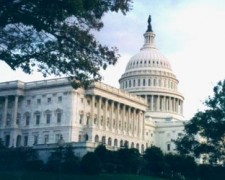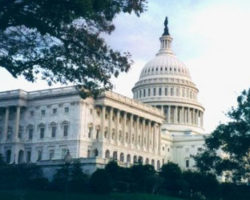 An all-star lineup of inside-the-Beltway figures gathered to hail the onset of the CALM Act, which requires that televised commercial messages be no louder than the programming in which they are embedded.
An all-star lineup of inside-the-Beltway figures gathered to hail the onset of the CALM Act, which requires that televised commercial messages be no louder than the programming in which they are embedded.
This was one bill that members of both parties could get behind. It was sponsored by House Communications Subcommittee Ranking Member Anna Eshoo (D-CA), with Sheldon Whitehouse (D-RI) shepherding the measure through the Senate.
It was signed into law at the end of 2010; the FCC put together the regulatory framework by the end of 2011; and now, at the end of 2012, it is in effect.
Here’s what interested parties had to say:
* Anna G. Eshoo (D-CA): “Earsplitting television ads have jolted and annoyed viewers for decades. With this new law, loud TV commercials that make consumers run for the mute button or change the channel altogether will be a thing of the past.”
* Sheldon Whitehouse (D-RI): “Loud TV commercials have been among the most common consumer complaints to the FCC for decades now. While this is a small issue compared to the big challenges facing our nation, it is an unnecessary annoyance in the daily lives of many Americans, and I’m glad to have done something about it.”
* National Association of Broadcasters President and CEO Gordon Smith: “Broadcasters have taken the lead in addressing the complex technical challenges associated with this issue. NAB is pleased to work with Congresswoman Eshoo, Senator Whitehouse and the FCC as the CALM Act is implemented.”
* National Cable & Telecommunications Association President and CEO Michael Powell: “We thank Congresswoman Eshoo and Senator Whitehouse for enacting sensible legislation that will improve the consumer TV experience. Our industry will continue to work closely with the FCC and the entire TV ecosystem to prevent loud commercials from being a disruption.”
* Advanced Television Systems Committee President Mark Richer: “ATSC approved the recommended practice, ‘Techniques for Establishing and Maintaining Audio Loudness for Digital Television,’ known as A/85 in 2009. The CALM Act requires the FCC to mandate use of A/85 as the basis for regulation of commercial audio loudness. I want to thank Congresswoman Eshoo for her confidence in ATSC to provide the industry developed technical strategies necessary to control the audio loudness of commercial advertisements.”





